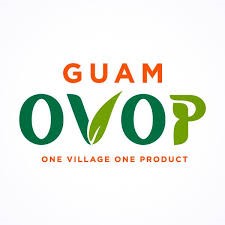In 2016, researchers from the Institute of Technology and Economics – Tourism conducted the research titled “Sustainable Rural Development in Vietnam: The Replication of ‘One Village One Product’ (OVOP) and ‘One Tambon One Product’ (OTOP) Movements in Binh Thuan Province” under the sponsorship of the POSCO TJ Park Foundation’s POC Asia Forum.
The “One Village One Product” (OVOP) movement, originally developed in Japan, has become a significant model for rural development across Asia and other regions. The aim of this movement is to empower rural communities by promoting local products, creating job opportunities, and enhancing the economic resilience of rural areas. In 2016, a research project was undertaken to examine the implementation and impact of the OVOP model in Binh Thuan province, Vietnam, with funding from POSCO Corporate. The research focuses on the adaptation and evolution of OVOP in different contexts, particularly in Vietnam, and explores the key factors contributing to its success or failure.

The study aims to explore the comparative differences between the Japanese OVOP model and the local adaptations in Thailand and Vietnam. The analysis will examine the impact of these approaches on rural development, focusing on the factors that contribute to sustainable success, particularly in the context of Binh Thuan province.
- Investigate the key differences in the OVOP adaptation in Binh Thuan province and compare them with the original OVOP in Japan and the OTOP movement in Thailand.
- Examine the success factors influencing rural development in Binh Thuan through the OVOC model, particularly focusing on the role of local resources and entrepreneurial skills.
- Analyze the applicability of endogenous versus exogenous growth strategies and the effectiveness of bottom-up versus top-down policy approaches in rural development.
- Provide recommendations for improving the OVOC model in Vietnam based on findings from comparative studies.
Methodology
The qualitative study employs documentary research to gather information on the OVOP, OTOP, and OVOC movements, along with fieldwork conducted in Binh Thuan province. The research will include:
- Interviews with local government officials, community leaders, and entrepreneurs involved in the OVOC program.
- Case studies of villages participating in the OVOC movement in Binh Thuan.
- Comparative analysis of the OVOP, OTOP, and OVOC models to identify critical success factors and challenges.
- Japan’s OVOP Movement: The Japanese model emphasizes endogenous development through local entrepreneurial spirit, with a focus on cultural uniqueness and product quality. The success of OVOP in Japan is largely due to its bottom-up approach, where local communities are directly involved in product development and decision-making.
- Thailand’s OTOP Program: The OTOP movement in Thailand closely follows the OVOP model but faces challenges in implementation. Although it encourages local products, it tends to incorporate more exogenous factors such as government-driven policies and support programs. The OTOP program has had varying degrees of success, often hindered by top-down policy implementations that may not always align with the needs or capabilities of local communities.
- Vietnam’s OVOC Model in Binh Thuan: The OVOC program in Binh Thuan province aims to promote local handicrafts and products unique to the region. The success of OVOC depends heavily on endogenous development strategies that utilize local knowledge and skills. However, challenges such as lack of infrastructure, marketing, and inconsistent government support have hindered its growth. The province has seen some success but needs to improve its approach to local engagement and reduce reliance on exogenous support.

Contributions of research
The research indicates several important factors contributing to the success or failure of OVOP and its adaptations:
- Community Involvement: Successful programs emphasize bottom-up approaches, where local communities have a strong say in the development of their products and business strategies.
- Government Support: While local initiatives are crucial, exogenous factors such as government policies, funding, and infrastructure play a significant role in sustaining rural development.
- Market Access: Ensuring that locally produced goods have access to broader markets, both domestic and international, is critical for long-term sustainability.
- Training and Capacity Building: Developing local human resources and entrepreneurial skills ensures that communities can independently manage and sustain their projects.
The OVOP movement, though initially successful in Japan, faces challenges when replicated in other countries such as Vietnam. The key to success lies in adopting a local-centered approach, ensuring bottom-up decision-making, and reducing reliance on external interventions. The OVOC model in Binh Thuan can be further strengthened by focusing on community participation, improving market access, and enhancing local capacity.
In conclusion, while Binh Thuan’s OVOC model has shown promise, refining its approach with a focus on sustainable, community-driven, and locally adapted practices will be crucial for long-term success.

